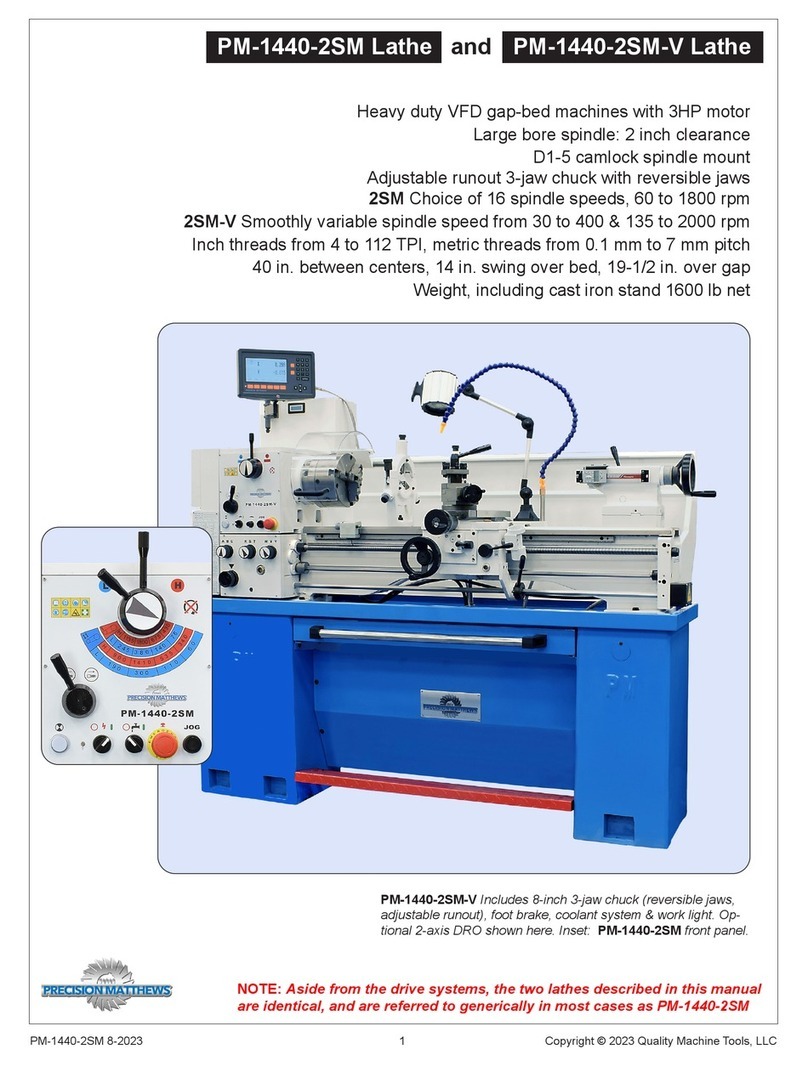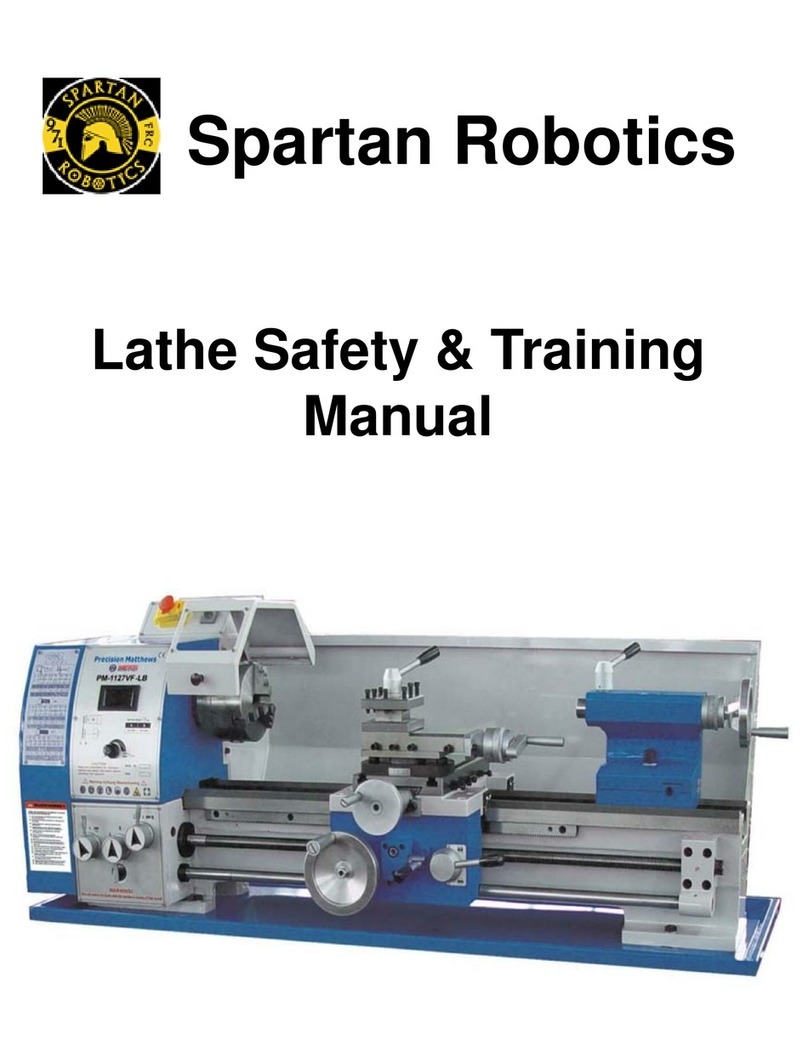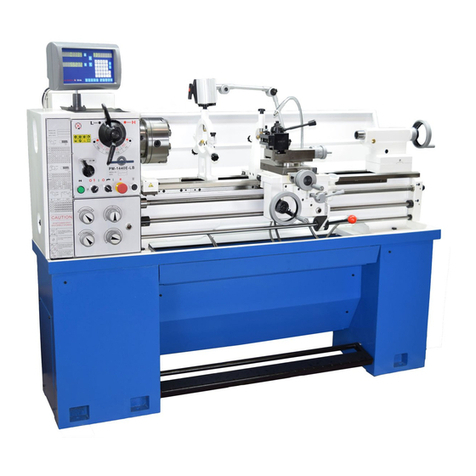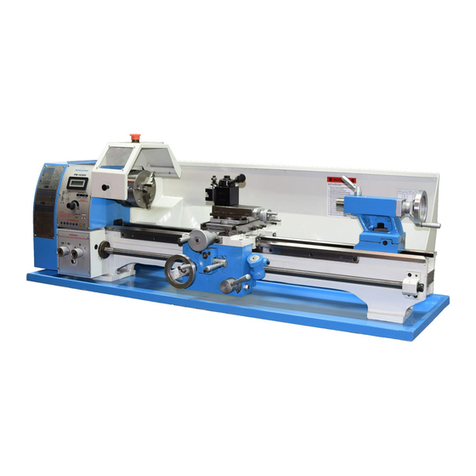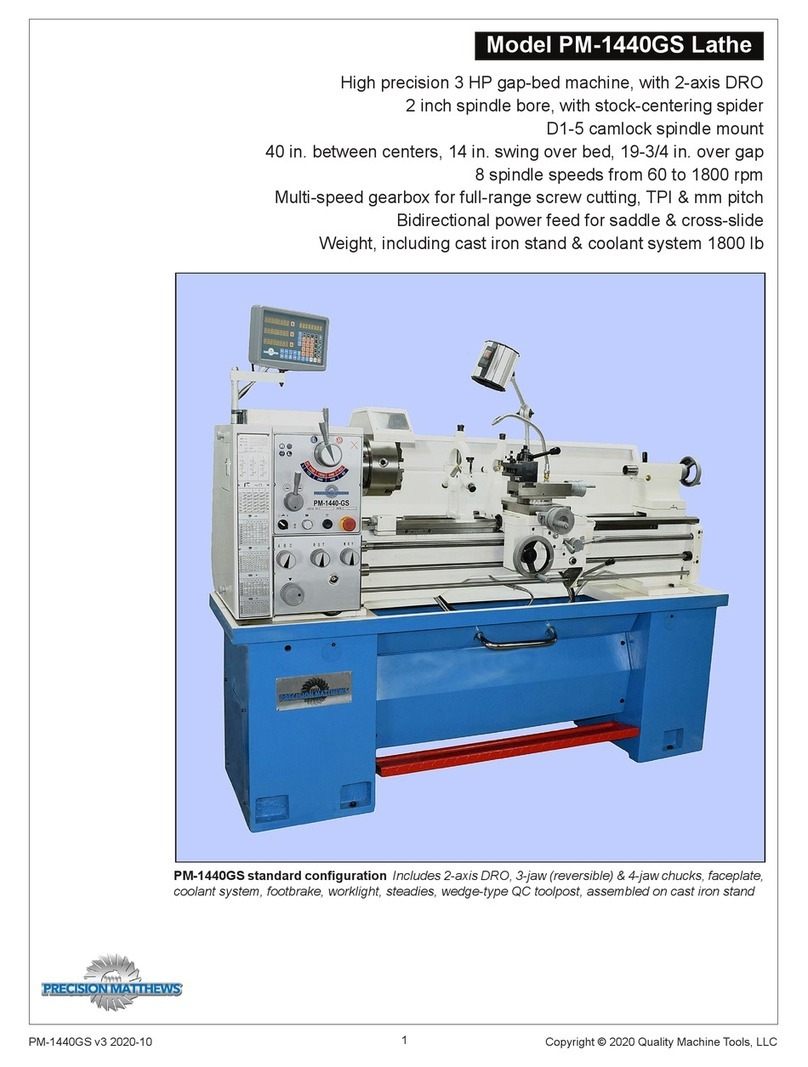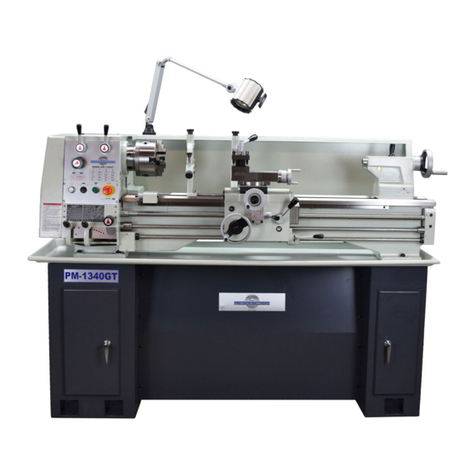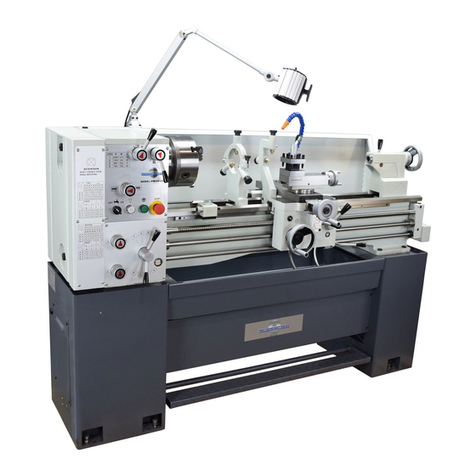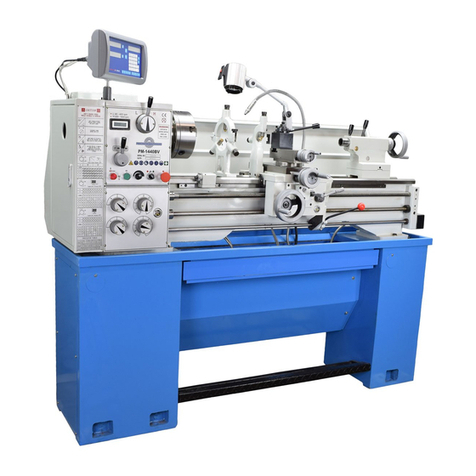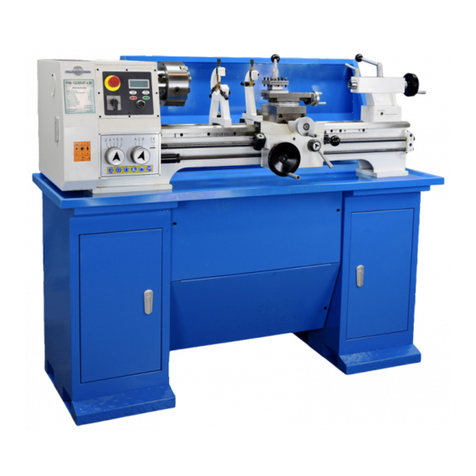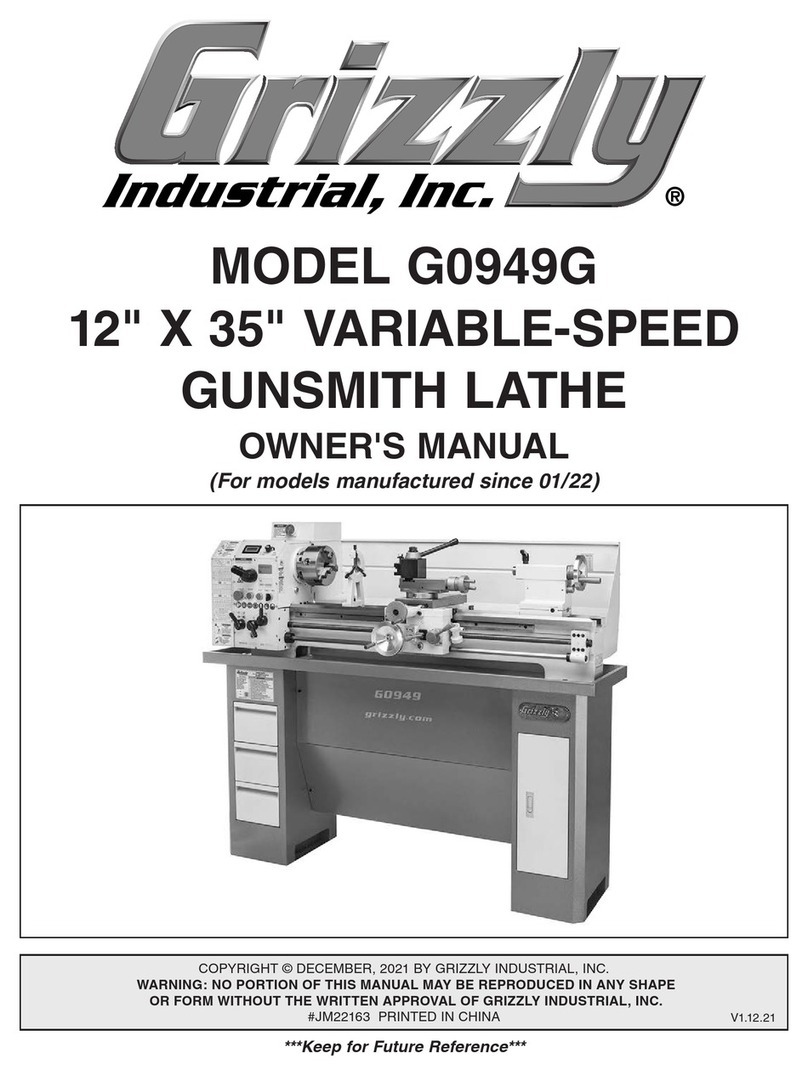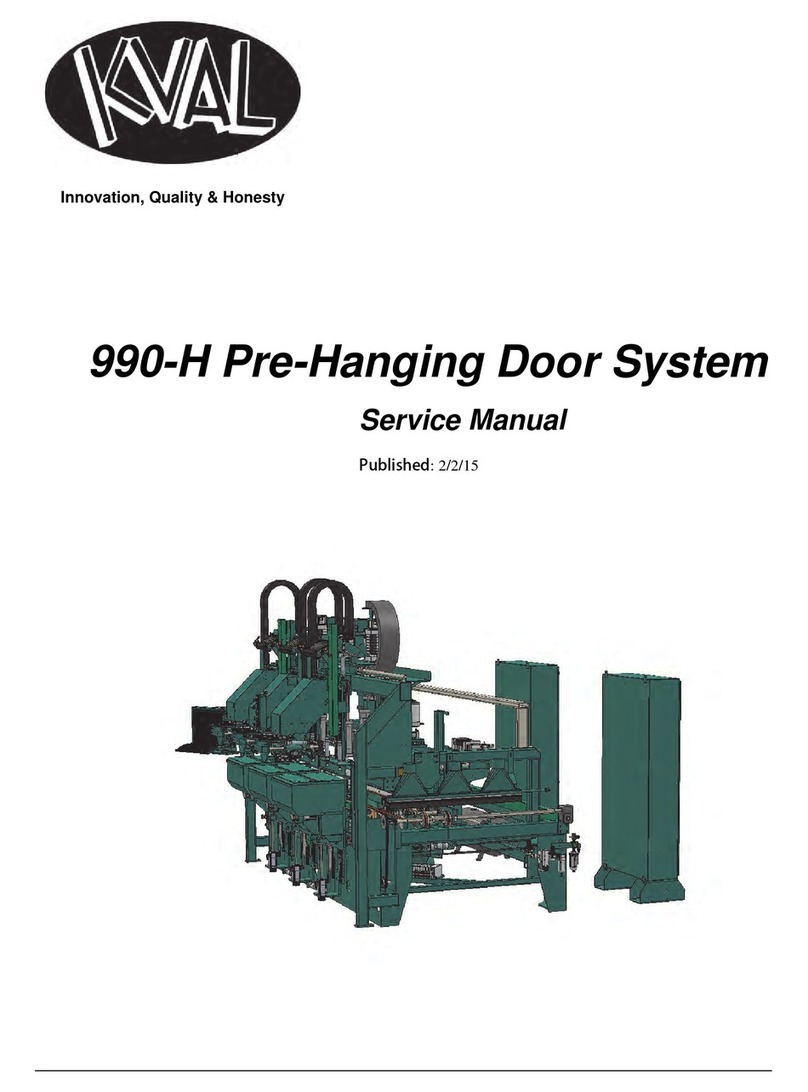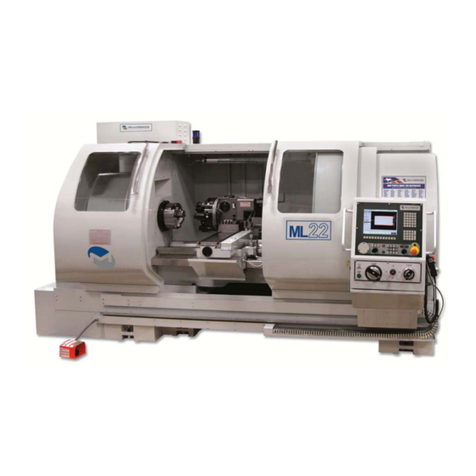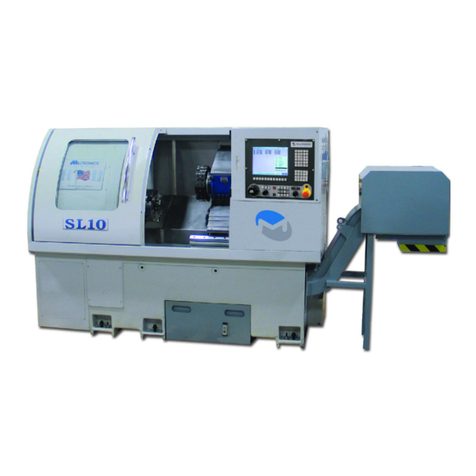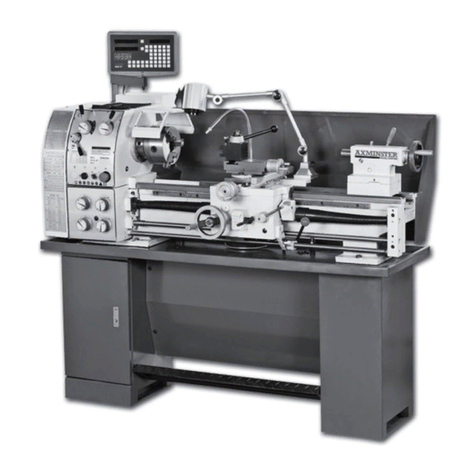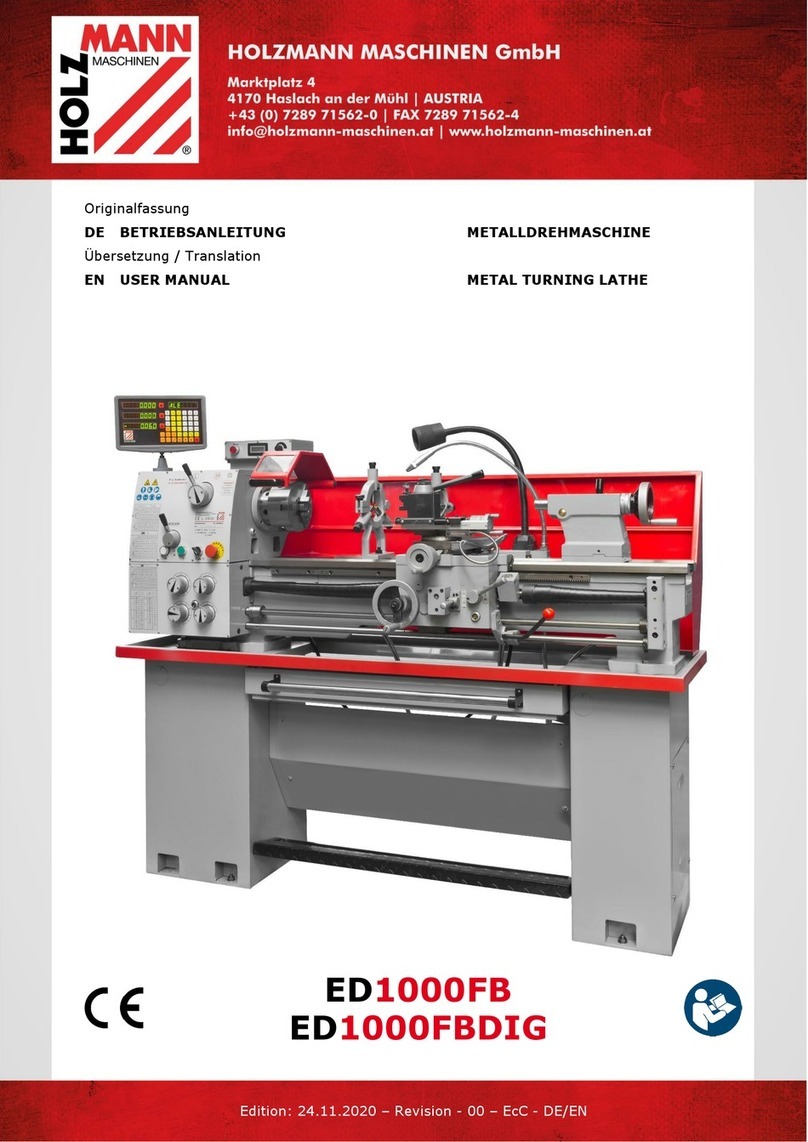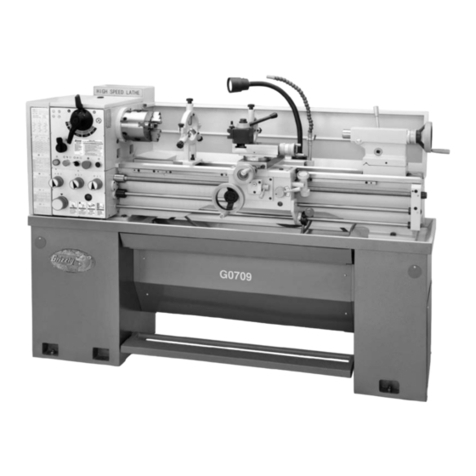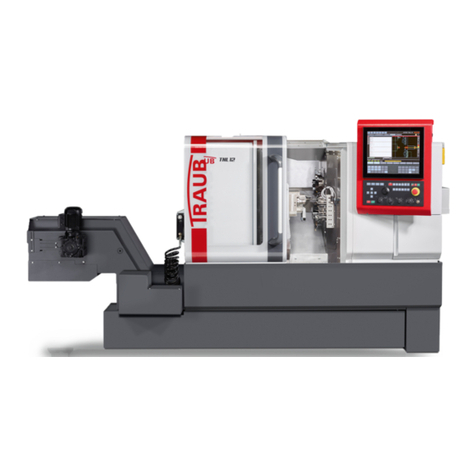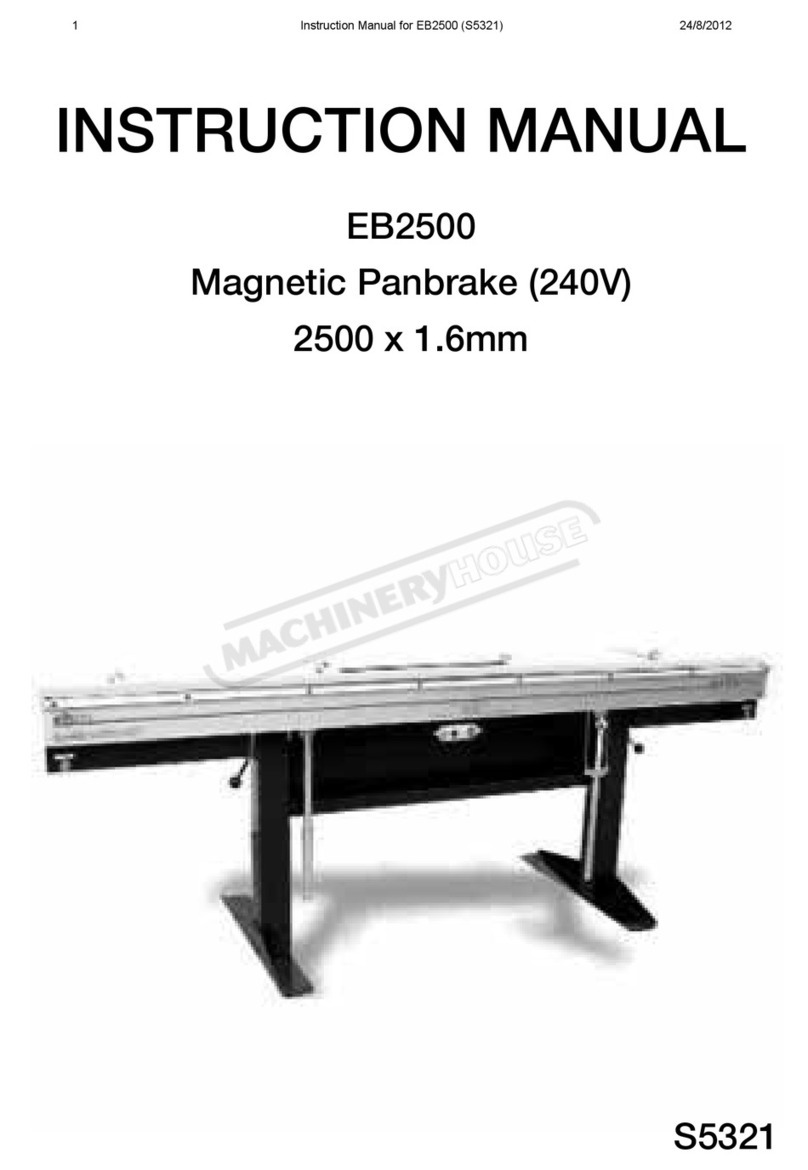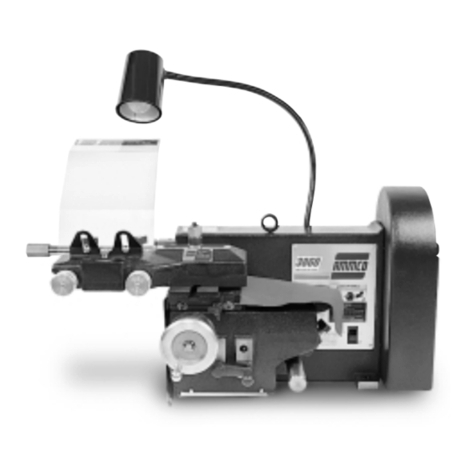
3
PM-1228VF v3 2020-10 Copyright © 2020 Quality Machine Tools, LLC
Section 1 INSTALLATION
THESE ARE THE MAIN POINTS TO WATCH OUT FOR!
But read the following pages for more information
• Handling the lathe is at least a two-man job.
• Lifting gear – sling, hoist or forklift – must be rated for at least 1/2 ton.
• Care must taken when lifting to avoid exing or other damage to any component of the
lathe, especially the leadscrew and hex-section feed shaft.
• Working location of the lathe must allow space for opening drive system cover at left;
also, access to the electrical box at the back of the headstock.
• Power requirement is 110V, 60Hz, single phase, 20A circuit.
• Extension cord not recommended; if no alternative, use 12 AWG not longer than 20 ft.
• Before connecting power be sure that:
1. The machine is on a rm footing.
2. Chuck camlocks tight, no wrench left in chuck.
3. Saddle and cross slide approx. mid-travel, power feed disengaged (Figure 3-18, etc.).
4. The speed control knob is set for a low or zero spindle speed, fully counter clockwise.
Check oil level in the gearbox before use
SETTING UP THE LATHE
The PM-1228VF-LB is shipped in two packing cases, one for
the lathe, one for the optional stand. When installed on the
stand, the machine can be lifted in one piece by an overhead
hoist or forklift with slings and/or chains, all items rated for a
total weight of at least 1/2 ton. A suggested setup for lifting is
shown in Figure 1-1.
When selecting a location for the lathe, allow sucient room at
the right to allow removal/servicing of the leadscrew and feed
shaft. At the back of the machine allow access for installation
of DROs, etc.
Be sure to keep all lifting gear clear of any part of the lathe,
especially the two shafts at the front. If necessary keep
the sling away from the shafts using “2-by” spreaders.
Figure 1-1 Lifting with slings
In this setup the sling was looped through holes in the lathe bed. If
instead the sling is set across and under the lathe bed, use spreaders
to keep the sling clear of all components — especially the front shafts.
Before lifting, protect the bed, then remove the chuck if in-
stalled. Move the tailstock and saddle as far to the right as
possible to balance the machine at the point(s) of suspension.
With the lathe in its permanent location, level it using metal
shims under the cabinets, or (preferred), install 150 lb rated
leveling mounts in the mounting holes of the two stand cabi-
nets, 4 for the left hand cabinet, 2 for the right.
LEVELING
The following procedure ensures that the lathe bed is in the
same state as it was when the lathe was checked for accuracy
in manufacture — level from end to end along the bed, and
from front to back. In other words, no warping.
For a stable installation, make sure all leveling mounts and/
or shims are properly weight bearing, rmly in contact with
the oor. Check and adjust level from end to end using a pre-
cision machinist’s level, if available. If not, use the most reli-
able level on hand. Check and adjust across the bed using a
matched pair of spacers such as 1-2-3 blocks to clear the Vee
tenons. Alternatively, check for level on the ground surface of
the cross slide as the carriage is traversed from end to end,
Figure 1-2. See also “Aligning the Lathe” in Section 3.
